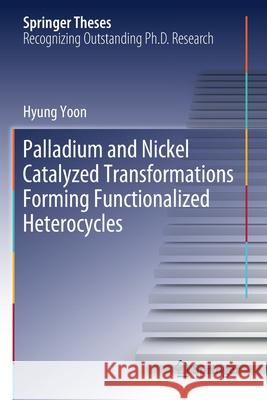Palladium and Nickel Catalyzed Transformations Forming Functionalized Heterocycles » książka
topmenu
Palladium and Nickel Catalyzed Transformations Forming Functionalized Heterocycles
ISBN-13: 9783030540791 / Angielski / Miękka / 2021 / 244 str.
Palladium and Nickel Catalyzed Transformations Forming Functionalized Heterocycles
ISBN-13: 9783030540791 / Angielski / Miękka / 2021 / 244 str.
cena 605,23
(netto: 576,41 VAT: 5%)
Najniższa cena z 30 dni: 578,30
(netto: 576,41 VAT: 5%)
Najniższa cena z 30 dni: 578,30
Termin realizacji zamówienia:
ok. 22 dni roboczych.
ok. 22 dni roboczych.
Darmowa dostawa!
Kategorie:
Kategorie BISAC:
Wydawca:
Springer
Język:
Angielski
ISBN-13:
9783030540791
Rok wydania:
2021
Ilość stron:
244
Waga:
0.34 kg
Wymiary:
23.39 x 15.6 x 1.3
Oprawa:
Miękka
Wolumenów:
01
Dodatkowe informacje:
Wydanie ilustrowane











